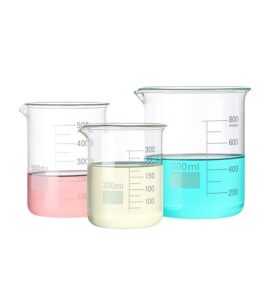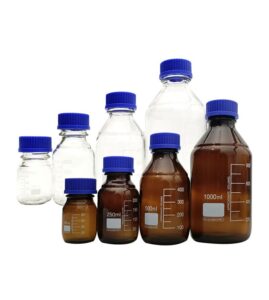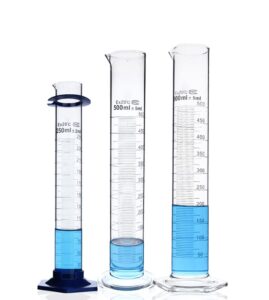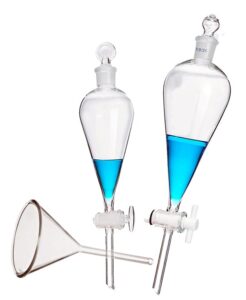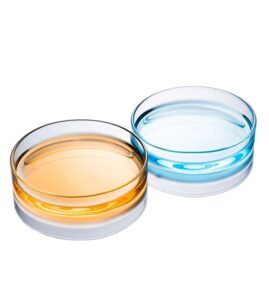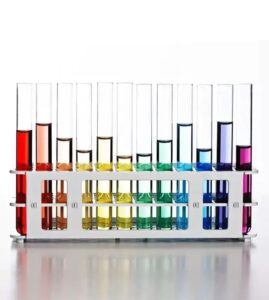Have you ever wondered how temperature fluctuations affect glassware in a laboratory setting? What are the risks associated with using glassware at various temperatures? These are critical questions for anyone involved in laboratory work, where precise and safe practices are paramount.
Temperature and Glassware: A Crucial Guide for Safe Laboratory Practices provides essential insights into this topic. Glassware is a staple in labs, but its interaction with temperature can pose safety risks. Understanding these risks and how to mitigate them is key for maintaining a safe and effective laboratory environment.
What Happens to Glassware at Different Temperatures?
Glass, a common material in lab equipment, is susceptible to changes in temperature. When glassware is heated or cooled rapidly, it can experience thermal stress. This stress can lead to cracks, breakage, or even shattering, posing significant safety hazards. It’s essential to understand the types of glass used in laboratories and their respective thermal properties.

Types of Laboratory Glassware and Their Thermal Properties
Laboratory glassware comes in various forms, each with unique properties and uses. Common types include borosilicate glass, known for its thermal resistance, and soda-lime glass, which is less resistant to thermal shock. Selecting the right type of glassware for specific temperature-related applications is critical. For detailed information, please refer to the American Society for Testing and Materials (ASTM) standards on laboratory glassware.
Comparative Table of Heat Resistance in Different Types of Laboratory Glassware
| Glassware Type | Heat Resistance | Usage Recommendations |
|---|---|---|
| Borosilicate Glass | High resistance to thermal shock | Ideal for high-temperature applications and rapid temperature changes. Commonly used for heating substances and in processes involving drastic temperature shifts. |
| Soda-Lime Glass | Lower resistance to thermal shock | Suitable for general laboratory use with gradual temperature changes. Avoid using for high-temperature applications or rapid heating/cooling. |
| Quartz Glass | Exceptionally high thermal resistance | Perfect for very high-temperature applications, including those exceeding the capabilities of borosilicate glass. Resistant to sudden temperature changes. |
| Lead Glass | Moderate thermal resistance | Generally used for radiation shielding rather than high-temperature applications. Care should be taken with temperature changes. |
| Aluminosilicate Glass | High resistance, similar to borosilicate | Suitable for applications involving high temperatures and thermal stress, similar to borosilicate glass. |
Thermal Expansion and Contraction in Lab Glassware
When exposed to temperature changes, glass expands or contracts. This phenomenon, known as thermal expansion and contraction, can cause stress in glassware. Understanding the coefficient of thermal expansion for different glass types is crucial for safe laboratory practices.
Thermal Expansion Coefficients and Usage Guidelines for Different Types of Laboratory Glassware
| Glassware Type | Coefficient of Thermal Expansion (×10^-6 /°C) | Application Scenarios | Usage Recommendations |
|---|---|---|---|
| Borosilicate Glass | 3.3 | High-temperature experiments, rapid temperature changes | Preferred for applications involving sudden temperature shifts and high heat exposure |
| Soda-Lime Glass | 8.6 | General laboratory use, mild temperature changes | Best for everyday lab tasks without extreme temperature variations |
| Quartz Glass | 0.5 | Ultra-high-temperature processes, precise experiments | Ideal for very high temperatures and where minimal expansion is crucial |
| Lead Glass | 9.0 | Radiation shielding, low thermal stress applications | Use where radiation protection is needed, not suitable for high-temperature work |
| Aluminosilicate Glass | 4.0 | Similar to borosilicate glass applications | Good for high-temperature and rapid temperature change scenarios, similar to borosilicate |

Understanding the Effects of Temperature Changes on Laboratory Glassware
Navigating the risks associated with temperature fluctuations in laboratory glassware is crucial for ensuring safe and effective scientific experiments. This comprehensive guide delves into the key factors that make temperature management a priority in lab settings.
- Thermal Expansion: Glass exhibits the characteristic of thermal expansion, meaning that its volume changes with temperature fluctuations. This thermal expansion can lead to glass cracking or other physical alterations. Therefore, when using glass instruments, it’s crucial to be aware of the impact of temperature to avoid accidents caused by thermal expansion.
- Rapid Cooling: Glass instruments can develop stress when cooled rapidly, which might lead to cracking or other physical changes. Thus, when using glass instruments, attention should be paid to the cooling rate to prevent accidents caused by rapid cooling.
- Sudden Temperature Changes: When glass instruments are abruptly moved from one temperature environment to another, the significant temperature difference can create thermal stress. This stress might cause the glass to crack or undergo other physical changes. Therefore, it’s important to be cautious of sudden temperature changes when using glass instruments to avoid accidents due to thermal stress.
- Chemical Reactions: Certain chemical reactions can release or absorb heat, potentially causing temperature changes in glass instruments. These temperature changes might lead to glass cracking or other physical alterations. Thus, when conducting chemical reactions in glass instruments, it’s necessary to consider the effect of temperature changes on the glass to prevent accidents arising from the heat released or absorbed during chemical reactions.
Recognizing and mitigating the risks of temperature changes in glassware is essential for laboratory safety. By understanding these factors, scientists and lab technicians can prevent accidents and maintain the integrity of their experiments.
How to Safely Heat and Cool Laboratory Glassware
To minimize the risks of thermal shock, it’s important to heat and cool glassware slowly and evenly. Techniques such as using a water bath or a heating mantle for gradual heating, and allowing glassware to cool at room temperature, can prevent breakage. Always consult the Occupational Safety and Health Administration (OSHA) guidelines for laboratory safety.

Optimizing Glassware Safety in Diverse Industries: Tailored Temperature Management Protocols
In the realm of laboratory safety, the significance of temperature management takes on varied dimensions across different industries. Each sector, be it pharmaceuticals, biotechnology, or chemical manufacturing, has unique requirements and challenges when it comes to handling glassware. This segment focuses on the specialized temperature management protocols essential in these diverse fields.
Industry-Specific Temperature Management Protocols: Delve into temperature management protocols specific to various industries such as pharmaceuticals, biotechnology, or chemical manufacturing, where glassware use is prevalent. In the pharmaceutical industry, for instance, the precision in temperature control is vital for the stability and efficacy of drugs. Biotechnology labs often deal with living organisms or biological systems where even slight temperature variances can alter experimental outcomes. Similarly, in chemical manufacturing, controlling the temperature is crucial for ensuring safe chemical reactions and product integrity. Each industry adopts tailored protocols to mitigate risks associated with temperature fluctuations in glassware, ensuring safety and accuracy in their specific laboratory environments.
The adoption of industry-specific temperature management protocols underscores the importance of customizing safety practices to meet the unique demands of different sectors. These tailored approaches ensure the highest standards of safety and efficiency in laboratories, highlighting the critical role of temperature management in diverse industrial settings.
Preventing Accidents: Best Practices for Handling Temperature and Glassware
Preventing accidents in the lab requires awareness and adherence to best practices. It is imperative to gradually adjust temperatures when dealing with glassware and to always be mindful of the potential for thermal shock. Using protective equipment like heat-resistant gloves and safety goggles is also essential. Regular inspections for cracks or flaws in glassware can prevent accidents before they occur. For more safety tips, refer to the National Institute of Standards and Technology (NIST) guidelines.

Training and Education: The Foundation of Laboratory Safety
A key aspect of ensuring safety in the lab is proper training and education. Laboratory personnel should be thoroughly trained in handling glassware and understanding the implications of temperature changes. This includes knowledge of the material properties of glass, safe heating and cooling techniques, and emergency procedures.
Innovative Solutions in Glassware Design for Temperature Management
Advancements in glassware design aim to mitigate the risks associated with temperature changes. Innovations include self-tempering glass and coated glassware, which offer improved resistance to thermal shock. These advancements represent a significant step forward in enhancing laboratory safety and efficiency.
FAQs about Laboratory Temperature Management
1. Why is temperature management crucial in laboratory settings?
Temperature management is vital in laboratories because it ensures the safety and integrity of experiments. Precise temperature control prevents glassware from experiencing thermal stress, which can lead to cracks, breakage, or shattering, thus avoiding potential hazards.
2. What are the thermal properties of common laboratory glassware materials?
Common laboratory glassware materials include borosilicate glass, known for its high resistance to thermal shock, and soda-lime glass, which has lower thermal shock resistance. Quartz glass offers exceptionally high thermal resistance, suitable for very high-temperature applications.
3. How does rapid temperature change affect laboratory glassware?
Rapid temperature changes can cause thermal stress in glassware, leading to cracks or breakage. Glass expands or contracts during heating or cooling, and if these changes occur too quickly, the material cannot adapt, resulting in physical damage.
4. What are some best practices for safely heating and cooling glassware?
To safely heat and cool glassware, it’s important to do so slowly and evenly. Techniques like using a water bath for gradual heating and allowing glassware to naturally cool at room temperature help prevent thermal shock and breakage.
5. Can different industries have specific temperature management protocols for glassware?
Yes, industries like pharmaceuticals, biotechnology, and chemical manufacturing have unique temperature management protocols tailored to their specific laboratory needs. These protocols take into account the unique requirements of each industry’s experiments and processes.
6. What are some innovative solutions in glassware design for temperature management?
Recent innovations in glassware design include self-tempering glass and coated glassware, which offer improved resistance to thermal shock. These advancements help in enhancing laboratory safety and efficiency.
7. What should I do if laboratory glassware breaks due to temperature change?
In the event of glassware breakage, follow your laboratory’s safety protocols. This usually includes clearing the area, using appropriate tools to clean up the broken glass, and disposing of it in designated sharps containers.
8. How important is training in laboratory temperature management?
Training is essential in laboratory temperature management. It ensures that personnel are aware of the risks associated with temperature changes and are knowledgeable in handling glassware safely, adhering to best practices, and responding to emergencies.
Conclusion
As we navigate the complexities of laboratory safety, it’s imperative that we stay informed and proactive. Embrace the guidelines and insights provided in “Temperature and Glassware: A Crucial Element in Laboratory Safety” to safeguard your laboratory environment. Let’s commit to continuous learning and adoption of best practices in temperature management. Stay curious, stay safe, and let’s push the boundaries of scientific exploration with confidence and responsibility.


